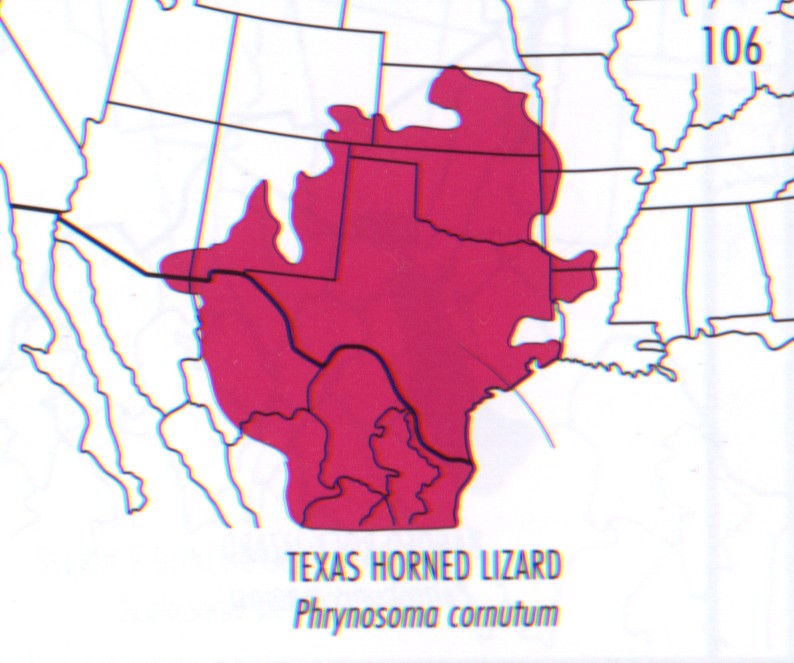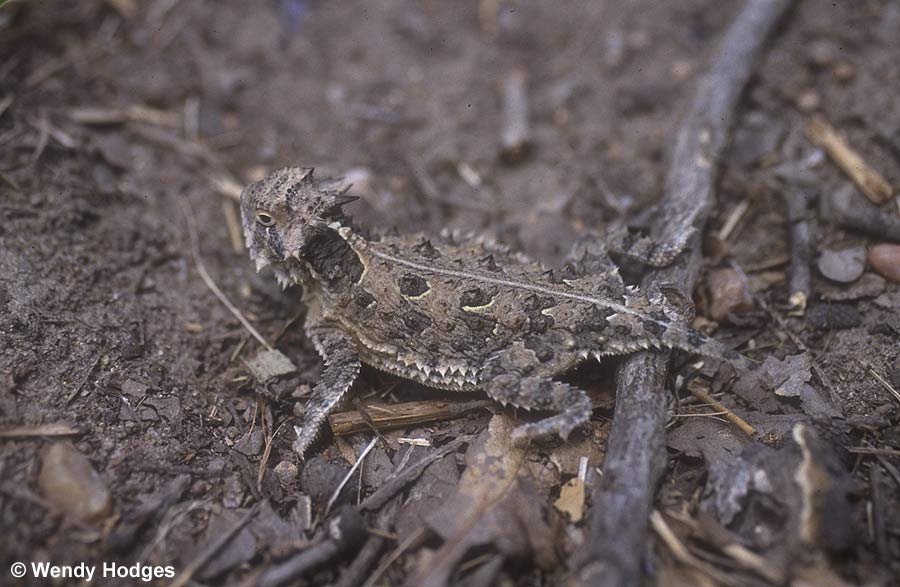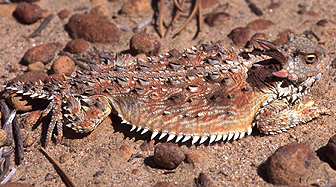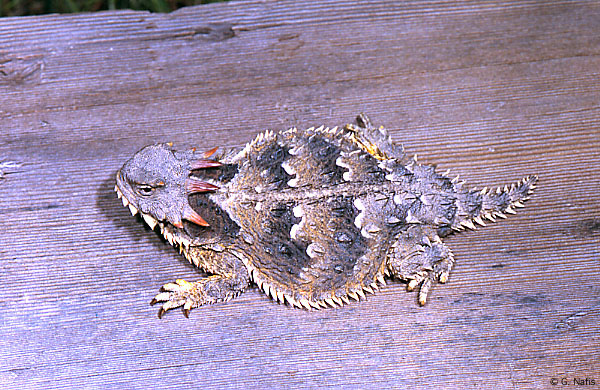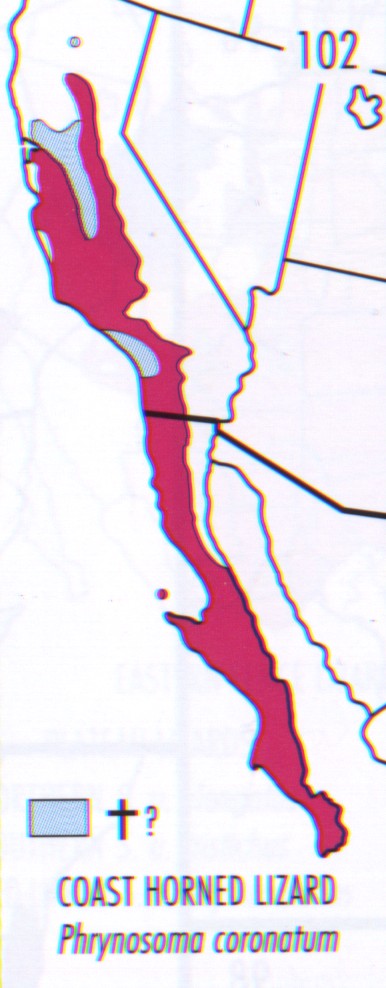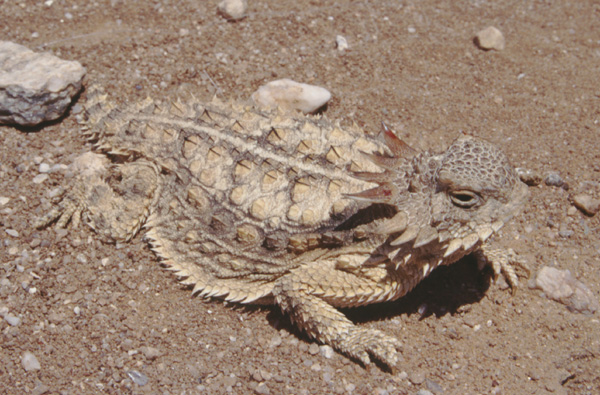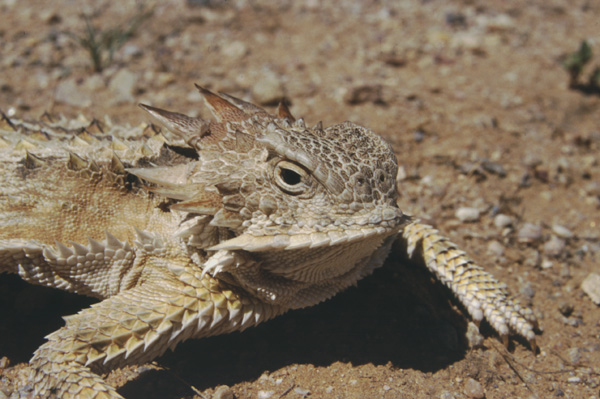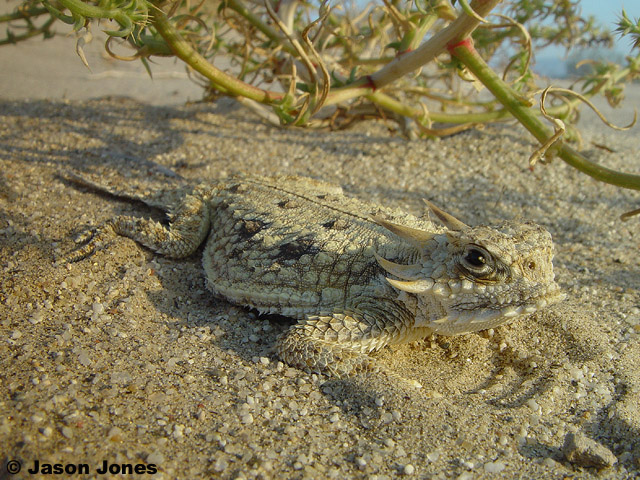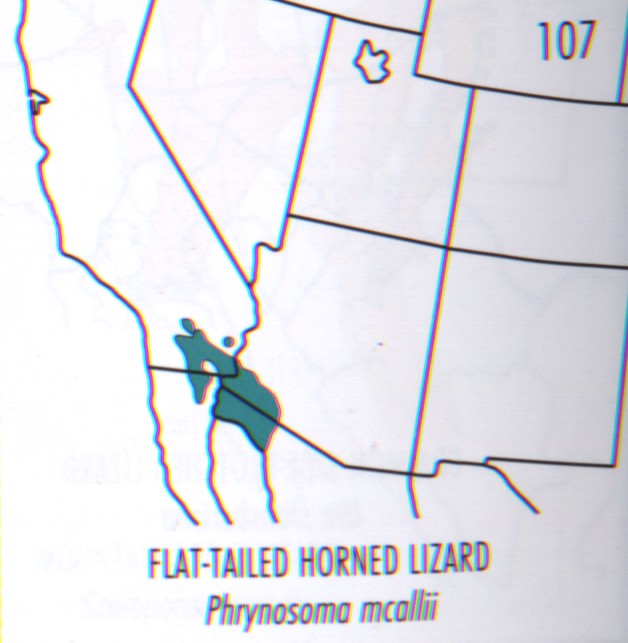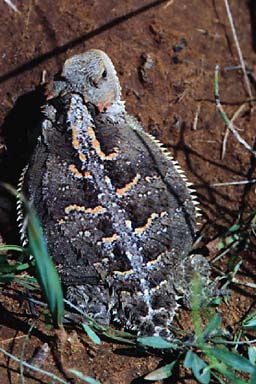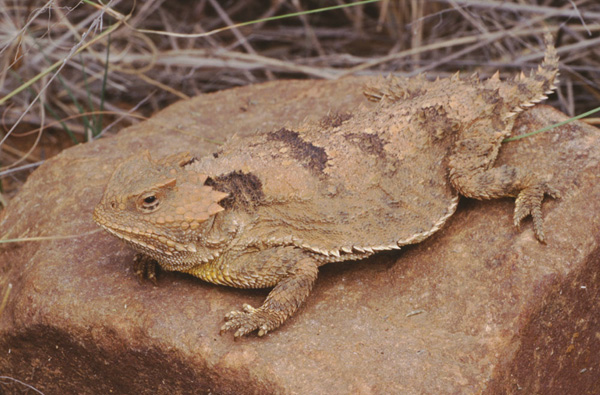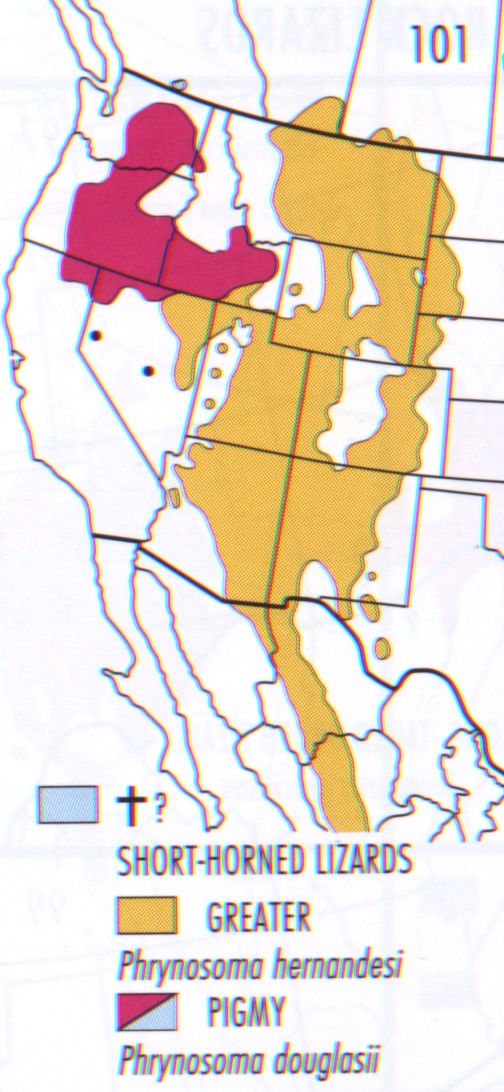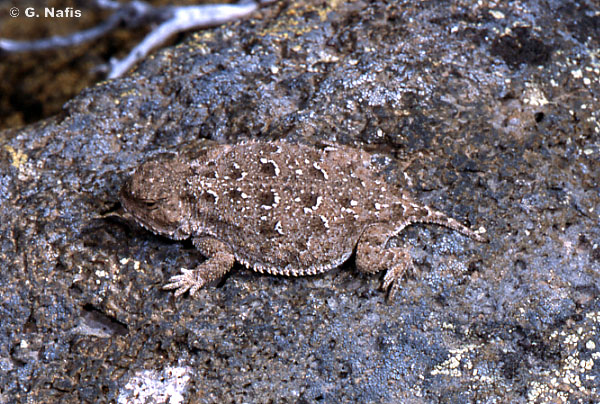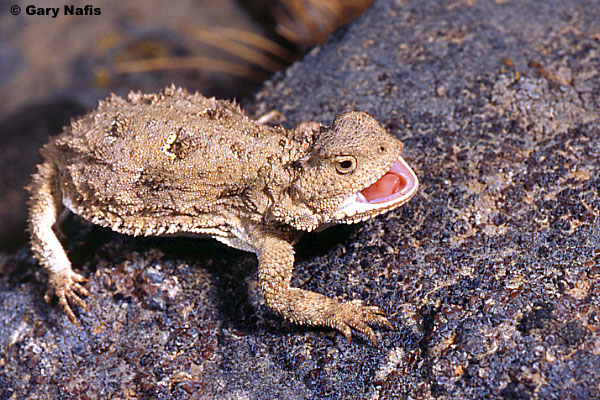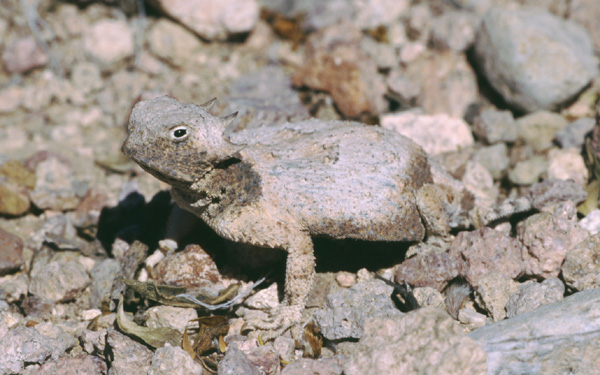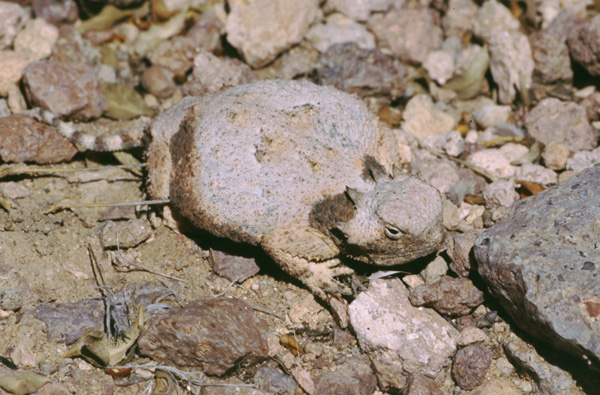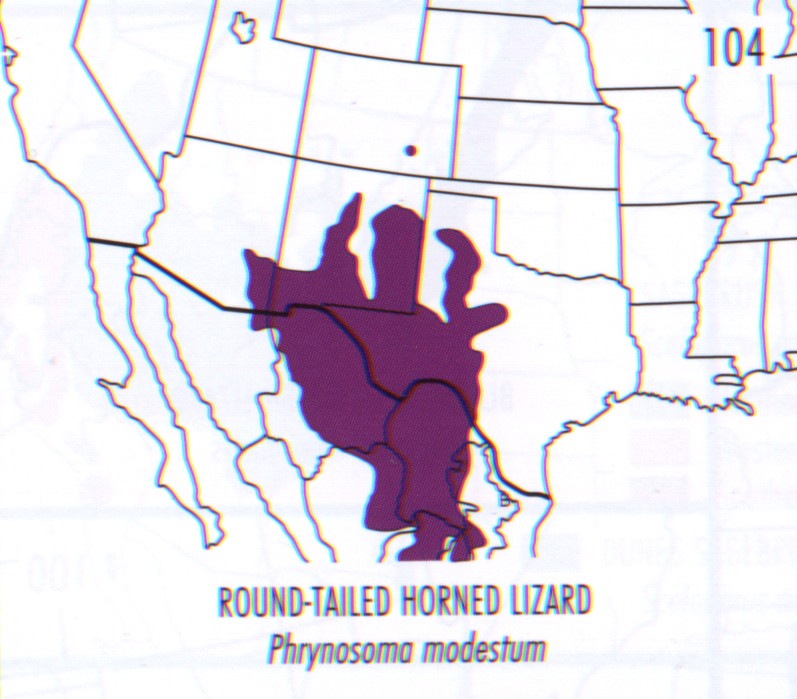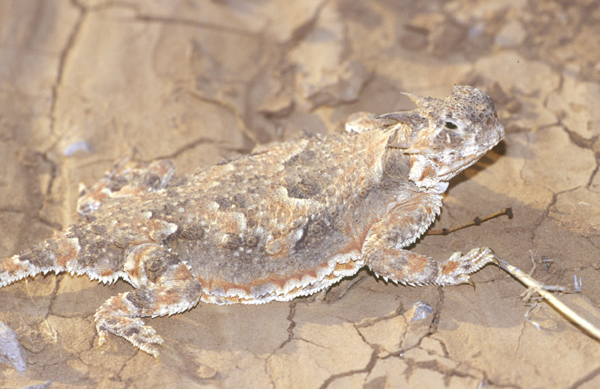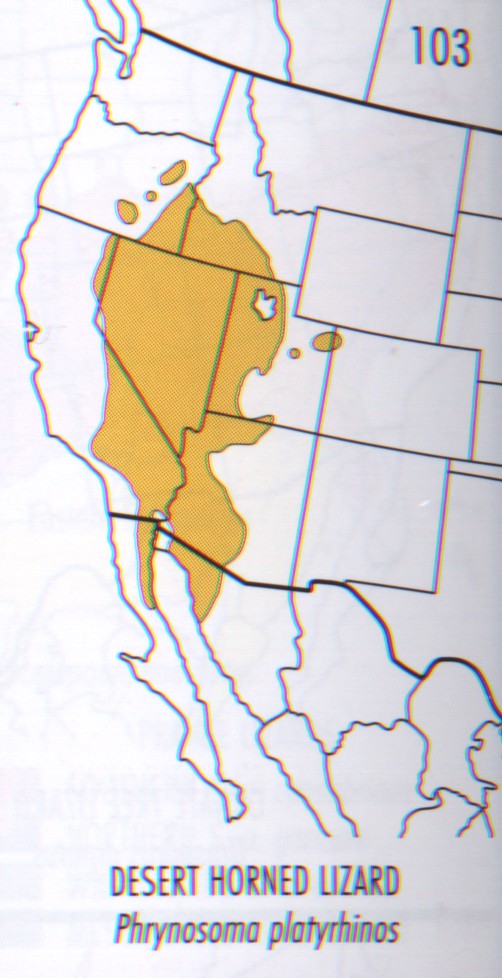Texas Horned Lizard (Phrynosoma cornutum)
Morphology: Colors include various shades of brown, yellow, and/or tan, with a beige/white middorsal stripe. Dark stripes radiate from the eye area down the sides of the face. Two dark splotches are present on the back of the neck, the rear edges of which are yellow/white. They have a single row of enlarged scales on each side of the throat, and two rows of pointed fringe scales on both sides of their body. Their sizes range from 6.3-12.7cm.
Behavior: P. cornutum can squirt blood from their eye sinuses. They have also been known to exhibit a water-gathering posture. They tilt their heads down, which helps water to flow across their bodies towards the mouth. This is important in areas where water soaks into the ground as soon as it falls. If water does not pool in areas where it can be lapped up, other ways of harvesting water must be found. P. cornutum hide under shrubs, in the burrows of other animals, or bury themselves in loose soil.
Breeding: P. cornutum are oviparous. Females lay 14-37 eggs in a clutch between May and July.
Habitat: Relatively dry open areas sparsely populated with plants, which include: bunchgrass, cactus, juniper, acacia, and mesquite. Soil types include: rocks, sand, loam, and hardpan.
Diet: Mostly ants, some beetles and grasshoppers.
